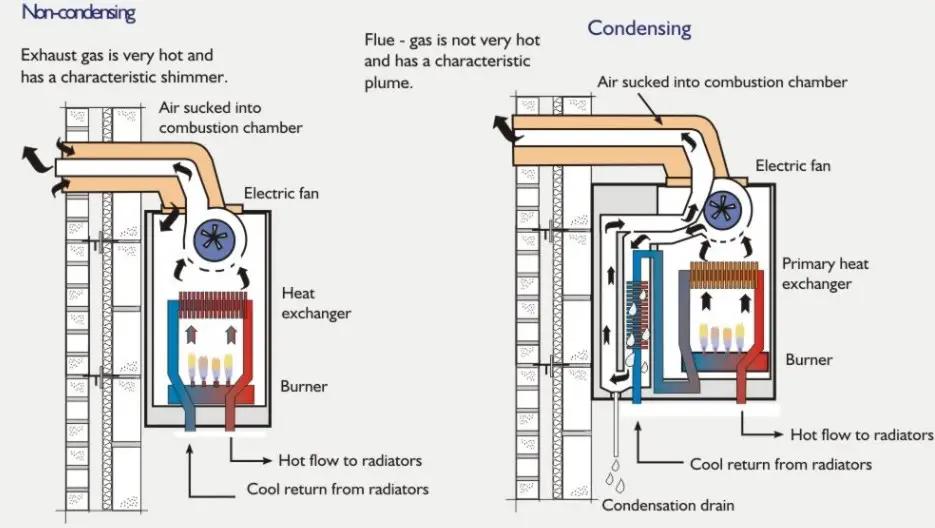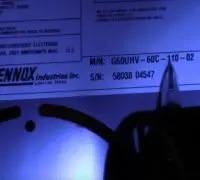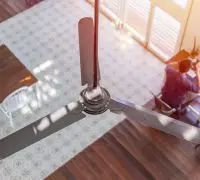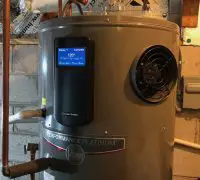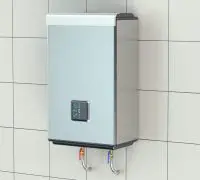If you're looking to fix or replace your Heating or A/C system, we can connect you with a reliable and cost-effective professional in your area.
The first thing to notice when it comes to condensing vs. non-condensing tankless water heaters is that the matter refers only about the gas tankless water heaters. There are no issues regarding the condensation in the case of electric tankless water heaters.
Natural gas is burned in the combustion chamber of the tankless water heater to produce the heat and hot water we want. There are several differences between the condensing and non-condensing water heaters that we need to address.
The venting system and the build of your house count a lot when you need to decide between the two systems, so keep reading for finding out the details.
Page Table of Contents
- What’s to say about the non-condensing tankless gas water heater?
- What’s the mechanism behind a non-condensing tankless gas water heater?
- What are the goods and bads of non-condensing tankless gas water heater?
- How to describe a condensing tankless gas water heater?
- What’s the mechanism behind condensing tankless gas water heater?
- What are the good aspects of condensing tankless water heater? What about the downsides?
- What’s the conclusion?
What’s to say about the non-condensing tankless gas water heater?
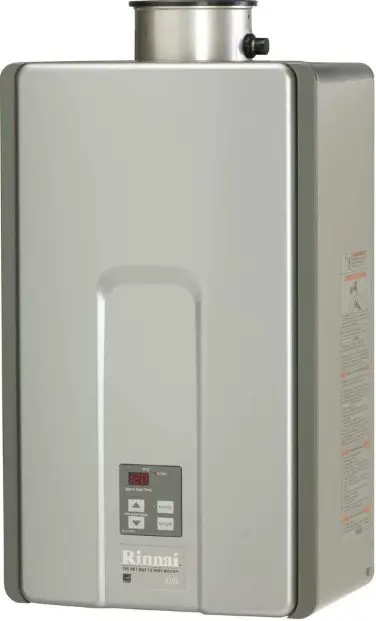
No matter if they use a storage tank or a tankless, the conventional water heaters are non-condensing. A non-condensing system provides dependable technology for the significant majority of homes across the US. It’s a standard option even for the most recently built homes.
Since US standards had changed a couple of years ago (in 2015), the energy efficiency standard got even higher. Even if there are no strict recommendations for the condensing water heater, the current energy efficiency standards encouraged the use of condensing water heaters. Many homes today are using non-condensing water heaters (most of the time they’re storage tank based). However, you should consider getting a condensing water heater (tankless or not) when replacing the ole water heater.
Non-condensing tankless water heater systems include some significant elements:
- Electronic ignition
- Stainless steel vent piping (it’s pricey)
- Fan induced draft
- Venting outside of your home
- Indoor combustion air
- Small diameter flue
What’s the mechanism behind a non-condensing tankless gas water heater?
Once the natural gas is burned for heating the water, an impressive amount of heat is also created. The non-condensing water heaters are made with metal (stainless steel pipes) venting, managing the extreme heat while venting it to the outside air. Most of the time, the vented can get as hot as 300F degrees. But it’s both a problem and a good thing.
What are the goods and bads of non-condensing tankless gas water heater?
Every system has its ups and downs, and the non-condensing tankless gas water heater makes no exception. Here are the functional aspects:
- Its retrofits are straightforward
- It’s not pricey
- It only needs professional maintenance
- The design is functional
The main pet peeve may pose a problem for some customers:
- They cannot vent directly
- The vent piping is pricey
- They cause byproducts that harm the environment
- They’re expensive to operate
- They’re only 80% efficient
One main concern about the non-condensing tankless water heaters is that the exhaust is corrosive and hot at the same time. Therefore, venting becomes challenging since it has to use materials (stainless steel is one to name) that are both corrosion and heat resistant. Besides, the venting has to be done so that it eliminates all fire dangers or unplanned heating of the residence.
An important outcome is that the gases venting outside still have essential heat. Therefore, the question about how to use heat efficiently is more than evident. It’s where the condensing water heater comes into play, capturing the heat that would typically get vented to the outside.
How to describe a condensing tankless gas water heater?
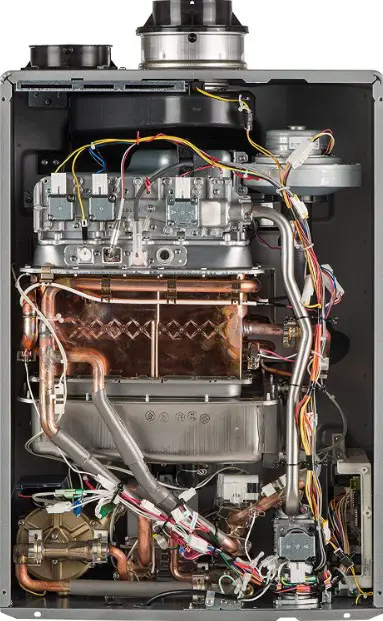
Just like all tankless water heaters, the condensing gas tankless water heaters can heat water while it’s running through the unit. It doesn’t have a tank for storing the water. The flame caused by the gas in the combustion chamber is going to heat water running through the system. The mechanism heats the water, whereas the combustion exhaust remains hot. For gaining more efficiency, it’s essential to use the remaining heat. Condensing water heaters are improving the effectiveness of the tankless water heaters with another step. The step lowers the temperature of the exhaust for venting.
In the case of condensing tankless gas water heaters, the exhaust gases from combustion are going to be cooled down. They’re also vented (mechanically) through the roof or an outer wall.
For gaining efficiency, the condensing tankless water heaters would have to come with a drain for managing the water condensed out of the combustion products. It’s mostly water vapor and carbon dioxide. You may have to also install a small pump for evacuating the condensed water when the condensed water needs to be risen for draining.
With the exhausting gases from the condensing water heaters being cool, venting shouldn’t be complicated and only requires affordable piping (PVC may be enough).
Here are the main elements of condensing tankless gas water heaters:
- Fan induced draft
- Vent piping going outside the house. It has to be small diameter, and it’s cheap too.
- Electronic ignition
- Indoor combustion air
What’s the mechanism behind condensing tankless gas water heater?
The natural gas is burned for heating the water running through the tankless gas water heater. During the process, a significant amount of heat is also produced in the main combustion chamber. The temperature is used thanks to a heating element for providing endless hot water immediately. It’s why people use tankless units so much.
The condensing water heaters also include a secondary process for using the heat from the hot combustion products. They use the cold temperature of the incoming water, collecting the heat as they condense the water out of the combustion products. The whole process improves the efficiency of the tankless water heater, even if it also leads to acidic water that you need to get rid of later on.
What are the good aspects of condensing tankless water heater? What about the downsides?
Here’s what to appreciate the most about the condensing tankless water heaters:
- They don’t consume much fuel
- They’re more efficient
- It’s easy to install them in a new built
- They’re at least 90% effective
- The venting for new construction is affordable
- They produce less unwanted byproducts.
The downsides aren’t significant, but you should be aware of them, nevertheless:
- The spending on the unit is higher
What’s the conclusion?
The condensing cycle cools the exhaust gases (down to 100F degrees), so it means that the venting can be done with cheap materials (PVC piping, for instance). They also pose a lower risk for unwanted heating or safety related to fire.
The venting for the condensing tankless gas water heaters is more straightforward than the non-condensing opponent.
In the end, it depends on the venting system if you’re going to install a condensing/non-condensing tankless system. Here are some final tips:
We can definitely connect you with a trusted provider in your area to repair, replace or maintain your heating and A/C systems. Why not let us find a professional for you?
- Choose a condensing method if the construction is new
- Tankless gas water heaters need less space than storage tank water heaters. It’s not complicated to have a straight replacement of the centralized gas tank water heater with a centralized condensing or non-condensing gas tankless water heater.
- It’s not complicated to manage a modified venting of condensing water heater. A straightforward PVC pipe connected to the garage ceiling and exiting through the sidewall can work. The condensate draining may go through a small sump pump, pouring into the drain of the laundry sink.
- It’s not easy to move from a centralized system to a several point-of-use tankless systems. Give it a good thought before buying.
